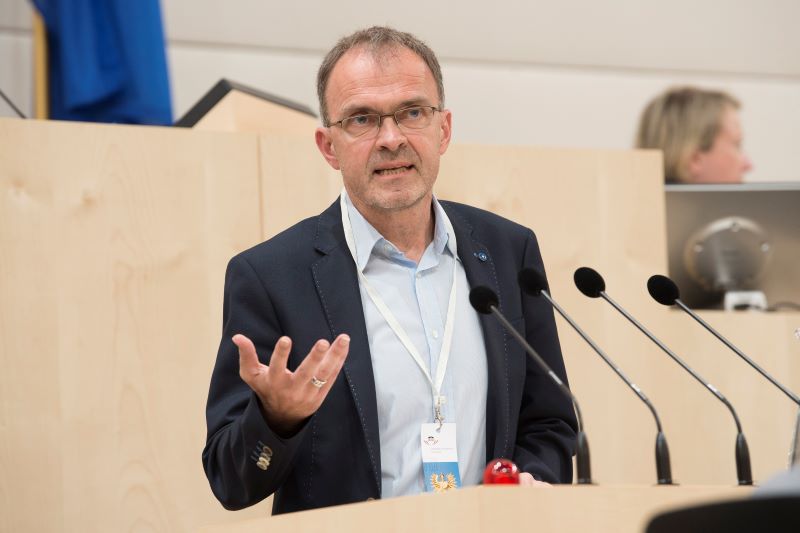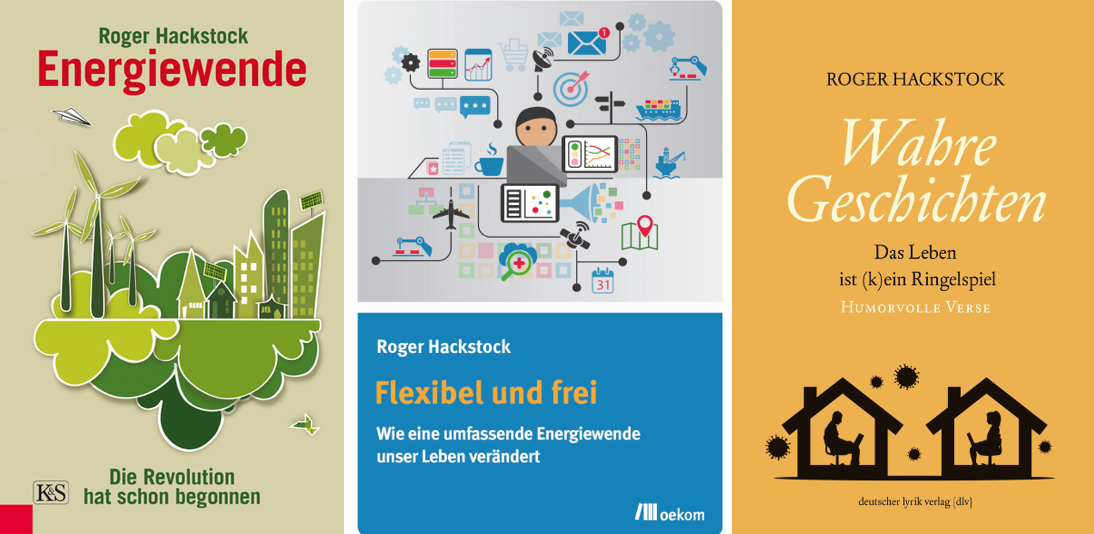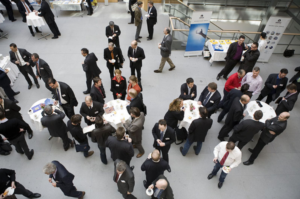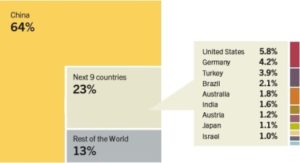“Large-scale plants are a new league that solar companies alone cannot handle”
April 23, 2024
Roger Hackstock is celebrating his 20th anniversary as a solar thermal lobbyist this year. From 2002 to 2013 and again since 2016, he has headed the Austrian association Austria Solar. He is still bursting with positive energy when he talks about the challenges facing the future of his industry. He tirelessly spurs the Austria Solar members on: “We have to get more actively involved with turnkey solutions for large-scale systems” or “We have to keep up with PV”. In this interview, Roger Hackstock appraises the current situation and forecasts the future prospects for solar thermal energy in Austria.
Photo: Jantzen
Austria is one of the top solar thermal markets in terms of installed solar thermal area. It has 343 kW/1000 inhabitants – fourth place in the world ranking after Barbados, Cyprus and Israel. How did this evolve?
Hackstock: With self-built systems in the 1980s, Austria had a good decade’s head start in solar thermal energy, which catapulted us to the top of the list right from the beginning.
Another boost was provided by the “Klimaaktiv” initiative of the Ministry for the Environment in the early 2000s. Austria Solar organized the largest programme within this, the Klimaaktiv Solar Heating Technology Programme. This ran from 2004 to 2009 with a budget of EUR 3.5 million. 170,000 brochures were distributed, stands were organized at two dozen trade fairs and around 500 installers were trained in solar systems. The result of all this was a doubling of the market from 180,000 to 356,000 m2. 2009 was the strongest year in the history of solar heating in Austria.
At the same time, you launched the European Day of the Sun, which took place for the first time in 2008. How did you come up with the idea and which supporters did you manage to win over at the beginning?
Hackstock: I came across a newspaper report titled “Sunny month of May, merry month of June”, a high-profile campaign on solar thermal energy from the 1980s with lots of events. Two months seemed too long to me, but what about a “Day of the Sun”? So I launched the initiative in 2002, with Climate Alliance Austria on board from the start. Two years later, Swissolar took over the concept, followed after another two years by the German Solar Association BSW Solar. That was clearly too slow, so together with the European Solar Thermal Industry Federation today called Solar Heat Europe, we submitted a project to the EU to extend the Day of the Sun to eight countries.
In the end, the European Day of the Sun ran for ten years and grew to include more than 7,000 events in 16 countries. In the last few years of the campaign, however, it became clear that it was increasingly no longer just about solar energy, but about renewables as a whole, including electromobility. As a result, the concept of a day of action purely for solar energy had outlived its usefulness and was phased out.
“We are slowly realizing that the biggest problem lies with heat”
Solar thermal energy has been losing ground in Austria since 2010. Why?
Hackstock: From 2010 onwards, solar thermal energy was increasingly displaced in the public perception by photovoltaics and heat pumps, especially for small private systems. China had completely taken over the European photovoltaics market with unfair dumping prices. The local solar heating industry was unable to keep up with this state-led price collapse of the competing technology. From then on, everyone was only talking about electricity. The market and politics have completely turned round. Of course, it’s great that we’re on the way to 100 % green electricity. However, we are slowly realizing that the biggest problem lies with heat and that we have barely touched on its decarbonization. This is something that will occupy us more in the coming years.
You had another major lobbying success in 2010. On the initiative of Austria Solar, the Climate Fund launched its funding programme for large-scale solar thermal systems. What is your assessment of this?
Hackstock: The programme went well, with over 200 projects in the first five years alone. It has also brought new project developers into the game who were not previously in the market. These developers are necessary for large-scale plants. This is a new league that the solar companies alone cannot handle. That’s why we have also enabled project developers to join the association, which is a real enrichment.
Nevertheless, you went one better and successfully lobbied the Climate Fund for a EUR 45 million funding pot, which supported feasibility studies and large-scale plants of any size.
Hackstock: For little Austria, this was indeed a huge programme, which started in 2021 30 feasibility studies for solar thermal systems were funded, which could theoretically lead to investments worth EUR 0.5 billion. The first four plants from this programme are already under construction, including one of the world’s largest plants with PVT collectors for a process heating system in the textile industry. Of the EUR 45 million, EUR 33 million have been allocated. Now we hope that the Climate Fund can keep up the momentum. The programme is currently being restructured.
What are the future prospects for solar thermal energy in Austria?
Hackstock: More and more companies are knocking on the door who want to ditch their gas or oil boilers completely. Here we need complete solutions from project developers. These solutions always involve solar thermal energy, which is an important future pillar of the industry. It is important here that the funding landscape does not focus solely on electricity, but instead focuses on heat, where the rollout of climate-neutral operational solutions is still making slow progress.
It is also encouraging that we are further along than ever before with Big Solar Graz. We are talking about a total investment of EUR 280 million for collector fields, storage tanks, heat pumps and biomass boilers for green district heating for 50,000 households. The 60 hectares of land for the 28-hectare collector field have been secured. The 1.5 million m3 storage facility is to be created by flooding a disused basalt quarry 20 km south of Graz. If the plant goes into operation as planned in 2028, it will take a leading position in the ranking of the world’s largest solar thermal plants.
“We clearly have to keep up with PV here”
What is the situation in the area of small private systems?
Hackstock: We clearly have to keep up with PV here. This means simplification in the direction of plug-and-play installation and adopting the digital visualization that is standard for PV at the customer’s premises for small solar heating systems as well. The situation is made more difficult by the fact that heating installers are switching to photovoltaics. You could say they have become unfaithful to us.
We have just shown in Styria that a lot can still be achieved in this segment with additional communication. Together with the Styrian guilds and the state government, we ran a campaign to advertise the doubling of the subsidy from EUR 150 to EUR 300 per m2: 160 advertising boards on the roads, a series in the daily press and trade fair appearances. According to the funding agency, this is already having an effect: the number of funding applications has doubled this year compared to last year. This kind of success is what makes the work enjoyable, I have to say!

Books by Roger Hackstock. The right-hand book is a collection of poems that he wrote during the coronavirus pandemic because “the energy transition lacks a creative angle. Everything is always so technical, so I wanted to do something about it,” Hackstock explained.
Despite your intensive professional life as a solar lobbyist, you have always managed to work on book projects. Is there anything new coming along?
Hackstock: I’m actually working on a new book that will be published next year. It’s about ways in which we can get our act together with more composure and humour instead of outrage and despair in order to leave the fossil age behind as quickly as possible. Once a climate-friendly everyday life is the calm normality, we will have made it. In the book, I show how we can succeed in doing this without constantly indulging in worry.
Websites of organizations mentioned in this news article:
Austria Solar: https://www.solarwaerme.at/
Solar Heat Europe: https://solarheateurope.eu/
Swissolar: https://www.swissolar.ch/de
BSW Solar: https://www.solarwirtschaft.de/en/home/


